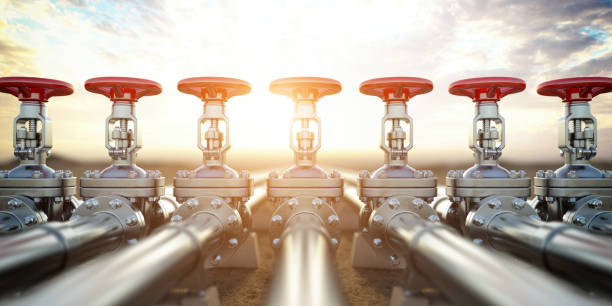
Securing a gas supply for your residence involves specific procedures to ensure efficiency and safety. This guide outlines practical steps to simplify the process and help you navigate it effectively. Proper preparation minimises delays, ensures compliance with regulations, and reduces unnecessary costs.
Check Gas Availability
The first step to take when deciding to apply for a gas connection is determining whether the service is accessible in your location. Contacting the appropriate network or checking local maps online can provide this information. Availability may depend on existing infrastructure or proximity to mains supply. If your property is in a new development area, extensions to existing pipelines might be necessary. Some regions may also have restrictions on the type of connections allowed, such as high-pressure versus low-pressure systems.
Choose Suitable Appliances
Select appliances designed for gas usage to meet your household requirements. Popular options include heaters, water systems, and cooktops. Ensure the products meet energy efficiency standards and are compatible with the service to avoid future adjustments. Look for appliances with high star ratings for better energy savings. Verify whether the chosen models require specific pressure settings to function optimally, as this can affect installation.
Find a Licensed Gasfitter
A certified professional is required for installation and any associated tasks. Hiring a licensed gasfitter guarantees adherence to local regulations. This professional also ensures the necessary safety protocols are met during installation. They can also advise on the best placement of meters and piping for maximum efficiency. It is crucial to confirm their credentials and ensure they are listed in the appropriate trade licensing registers.
Obtain Necessary Permits
Permits may be required depending on your local government’s policies. Before proceeding, confirm the regulations in your area to avoid delays. These permits are essential to ensure legal compliance and safety. Depending on your location, additional clearances might be necessary for heritage-listed properties or areas with restrictive zoning laws. Some jurisdictions also require periodic inspections to maintain compliance after installation.
Schedule Connection Appointment
Once preparations are complete, arrange an appointment for the connection. The process typically includes site evaluation, setting up meters, and confirming readiness for the service. Timely scheduling helps prevent disruptions to your plans. Confirm with your service provider whether trenching is required to connect your property to the mains. For multi-dwelling buildings, coordination with other units might be necessary to avoid overlapping works.
Install Gas Meter
The service provider will install a gas meter to regulate usage and monitor consumption. The type of meter may depend on the size of your property and the volume required. After installation, verify its functionality with the assigned technician. Smart meters, where available, provide additional benefits like real-time monitoring and remote readings. Proper placement of the meter also ensures ease of access for maintenance and billing purposes.
Conduct Safety Checks
Before activating the connection, ensure the system is free from leaks or potential hazards. Licensed professionals should conduct these tests to meet safety regulations. Any irregularities should be addressed immediately. Gas detection devices may be used during testing to identify minor leaks. Ensure the venting systems are functioning correctly to prevent carbon monoxide buildup in enclosed spaces.
Set Up an Energy Retail Account
Choose an energy retailer and establish an account to activate your service. Compare rates and plans from various providers to find one suited to your usage patterns. This account is crucial for billing and service-related queries. Some providers offer bundled plans that include discounts for combining electricity and gas services. Carefully review contract terms, especially regarding cancellation fees and tariff adjustments.
Understand Connection Costs
Costs can vary depending on the distance from the mains, installation complexity, and appliance requirements. Typical charges include setup fees, inspection costs, and infrastructure expenses. Being informed about these costs allows better financial planning. Upfront quotes from distributors can help avoid unexpected expenses. Additionally, some governments provide rebates or incentives for energy-efficient gas installations.
Learn About Connection Timeframes
Connection timelines may range from days to weeks, influenced by property readiness and service provider schedules. Consult the distributor for an accurate estimate and plan accordingly to avoid inconveniences. Urban areas with existing infrastructure often have shorter timelines compared to rural regions. Delays may occur if inspections reveal non-compliance with safety or structural standards.
Choose a Gas Distributor and Understand Their Role
Distributors manage the infrastructure needed to deliver gas to your home. They ensure pipelines are functional and maintain supply reliability. Choosing a reputable distributor simplifies the process, as they handle essential logistics. They also coordinate with local contractors to ensure adherence to safety regulations. Some distributors offer additional services, such as emergency repairs or energy usage audits, to enhance customer support.
Completing a gas connection for your home requires a systematic approach. By understanding and following these outlined steps, you can ensure a seamless process. Proper planning and coordination with licensed professionals make it possible to establish a safe and efficient gas system tailored to your needs.